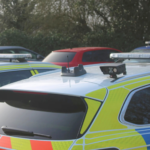All sorts of things can impact the effectiveness of vehicle antennas, from changing seasons to material interference such as metal or tinted glass. When you use an antenna for critical communications it’s extremely important to choose one with robust features and reliable performance.
Placement and ongoing maintenance also play crucial roles, this guide will offer insights into strategic antenna placement and adjustments to ensure your communication remains uninterrupted throughout the year.
Understanding Signal Interference
Physically, large structures like buildings and natural elements such as hills and trees can obstruct signals. Seasonal changes further complicate this by altering environmental density – leafy trees in summer or heavy snow in winter can weaken signals. The materials used in vehicles, particularly metal or specially coated glass can also impede radio waves due to their properties that reflect or absorb electromagnetic energy.
This is why the antenna is typically placed on the roof towards the back of the vehicle where it will have a clearer line of sight to the signal source. Without getting too technical, there has been extensive research and testing with narrow and wideband channel characteristics determined for various antenna positions. With the findings clearly supporting the optimal placement on the vehicle for the best reception coverage is the rear roof.

Strategic Antenna Placement
- Elevation
Being higher up reduces the number of obstructions like buildings and trees that can block or interfere with signal paths. An elevated position allows the antenna to have a clearer, more direct path to communication satellites or towers, which significantly enhances the strength and reliability of signal reception. Essentially, the higher the antenna, the fewer the barriers to clear communication. - Obstruction
When choosing the right place to install your antenna on specialist vehicles such as ambulances, police vans and fire engines, consider the presence of other equipment on the roof such as ladders, light bars, sirens, speakers, and so on. These items can create physical obstructions that interfere with the antenna’s signal transmission. The antenna should be mounted in a clear area with enough space around it to ensure optimal performance.

- Maintenance
The antenna should be easily accessible for maintenance without requiring the removal of other equipment. Performing regular checks and repairs is often required in harsh working environments so strategic placement should allow technicians easy access from the vehicle’s exterior without dismantling other crucial equipment. - Safety
With emergency vehicles in particular, it’s critical that the antenna does not impede the functionality of other essential equipment or compromise the vehicle’s operations. This includes ensuring the antenna doesn’t obstruct the driver’s view, interfere with the deployment of emergency equipment, or pose a risk during high-speed travel and manoeuvring. - Regulations
The Federation of Communication Services (FCS) enforces the UK Code of Practice for the installation of mobile radio and related ancillary equipment in land-based vehicles. This means that vehicle installers must meet certain standards to ensure a “satisfied customer with a safe and efficient installation” The legislation includes very strict and detailed instructions on the proper placement and installation of vehicle antennas. For example, it specifies that an “antenna mounted on boot lid will be horizontal when the boot is opened presenting a danger of injury.” It also mandates that the installation “does not affect the overall vehicle height where restrictions may be encountered, for example in car parks, or with overhead cables, trees, etc.” These guidelines aim to address both safety concerns and functional considerations, ensuring that installations do not interfere with the vehicle’s safe operation.

Sure Antennas is proud to announce its certification as a Platinum Partner with The Association of Vehicle Installers (AVI), a group established by installers themselves. This association focuses on benefiting end users by ensuring that vehicle devices not only function correctly but are also installed according to stringent standards. This certification underscores Sure Antennas’ commitment to quality and adherence to the highest industry standards, ensuring their installations meet the precise requirements set out by AVI to guarantee optimal performance and safety.
Leaders & Innovators
Sure Antennas core focus is in delivering innovative antenna solutions that offer industry leading performance. Proudly manufactured in the UK, Sure Antennas offer solutions for both marked emergency service vehicles and bespoke covert applications. Sure Antennas also manufacturers a range of accessories including cabling, multiplexers and intercom systems.






